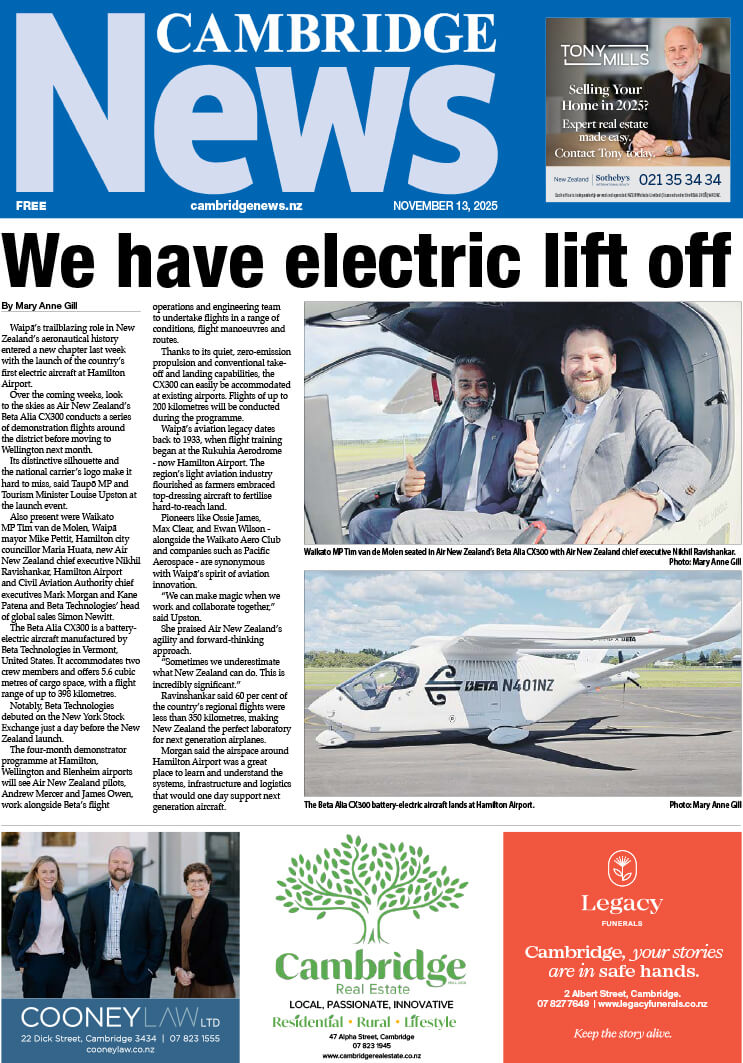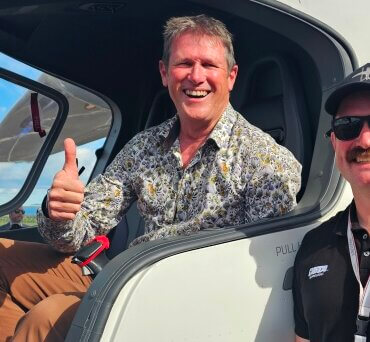
Waipa mayor Mike Pettit inside the electric plane with Beta pilot Nathan Dubie.
Waipā’s trailblazing role in New Zealand’s aeronautical history entered a new chapter last week with the launch of the country’s first electric aircraft at Hamilton Airport.

Waikato MP Tim van de Molen seated in Air New Zealand’s Beta Alia CX300 with Air New Zealand chief executive Nikhil Ravishankar. Photo: Mary Anne Gill
Over the coming weeks, look to the skies as Air New Zealand’s Beta Alia CX300 conducts a series of demonstration flights around the district before moving to Wellington next month.
Its distinctive silhouette and the national carrier’s logo make it hard to miss, said Taupō MP and Tourism Minister Louise Upston at the launch event.
Also present were Waikato MP Tim van de Molen, Waipā mayor Mike Pettit, Hamilton city councillor Maria Huata, new Air New Zealand chief executive Nikhil Ravishankar, Hamilton Airport and Civil Aviation Authority chief executives Mark Morgan and Kane Patena and Beta Technologies’ head of global sales Simon Newitt.
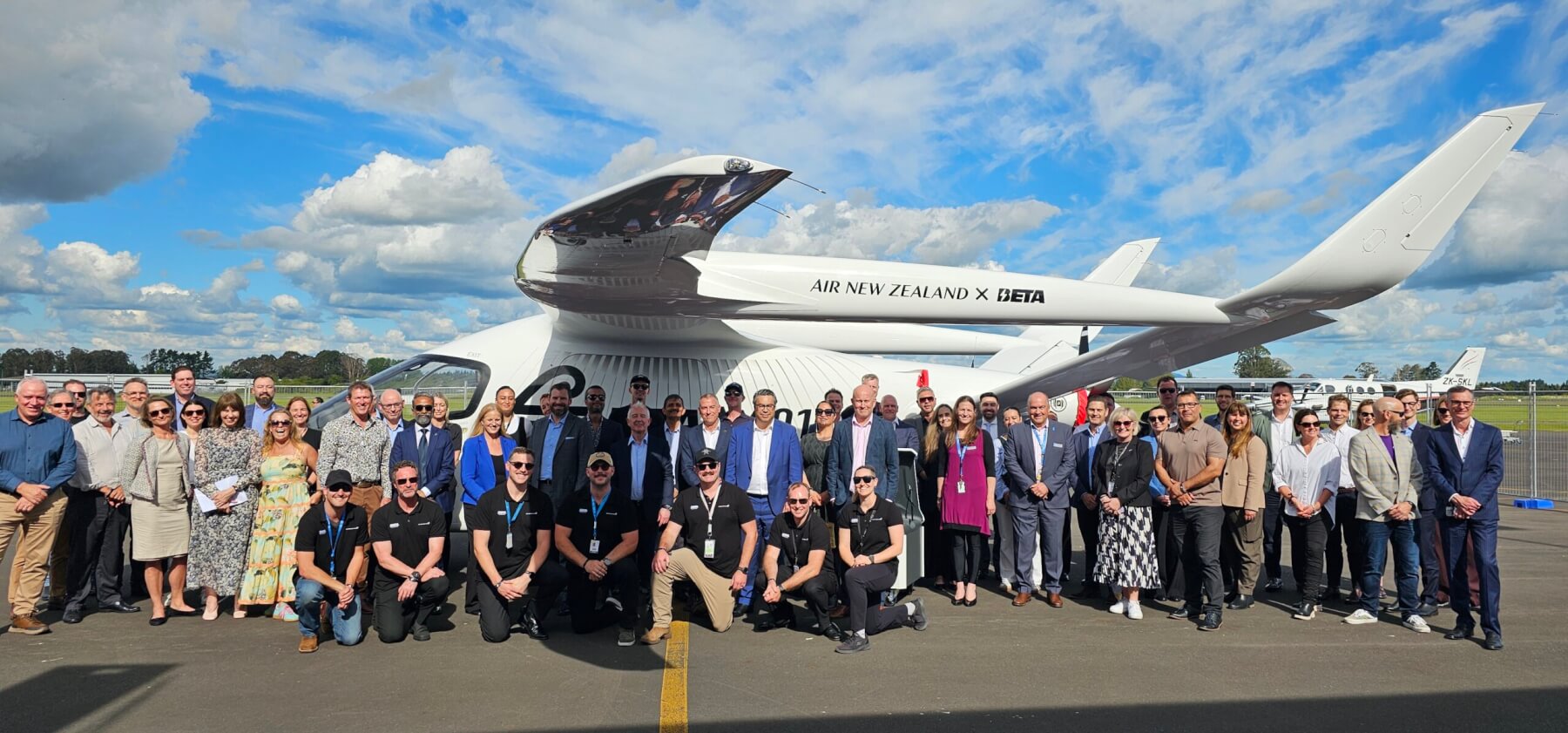
The new electric plane with its pilots and technical support, Air New Zealand and Beta staff and VIP guests including Tourism Minister Louise Upston. Photo: Mary Anne Gill
The Beta Alia CX300 is a battery-electric aircraft manufactured by Beta Technologies in Vermont, United States. It accommodates two crew members and offers 5.6 cubic metres of cargo space, with a flight range of up to 398 kilometres.
Notably, Beta Technologies debuted on the New York Stock Exchange just a day before the New Zealand launch.
The four-month demonstrator programme at Hamilton, Wellington and Blenheim airports will see Air New Zealand pilots, Andrew Mercer and James Owen, work alongside Beta’s flight operations and engineering team to undertake flights in a range of conditions, flight manoeuvres and routes.
Thanks to its quiet, zero-emission propulsion and conventional take-off and landing capabilities, the CX300 can easily be accommodated at existing airports. Flights of up to 200 kilometres will be conducted during the programme.
Waipā’s aviation legacy dates back to 1933, when flight training began at the Rukuhia Aerodrome – now Hamilton Airport. The region’s light aviation industry flourished as farmers embraced top-dressing aircraft to fertilise hard-to-reach land.

Hamilton Airport chief executive Mark Morgan, second right, makes a point to Air New Zealand chief executive Nikhil Ravishankar watched by from left Air NZ pilot Andrew Mercer and programme manager Jolyon van Daalan. Photo: Mary Anne Gill
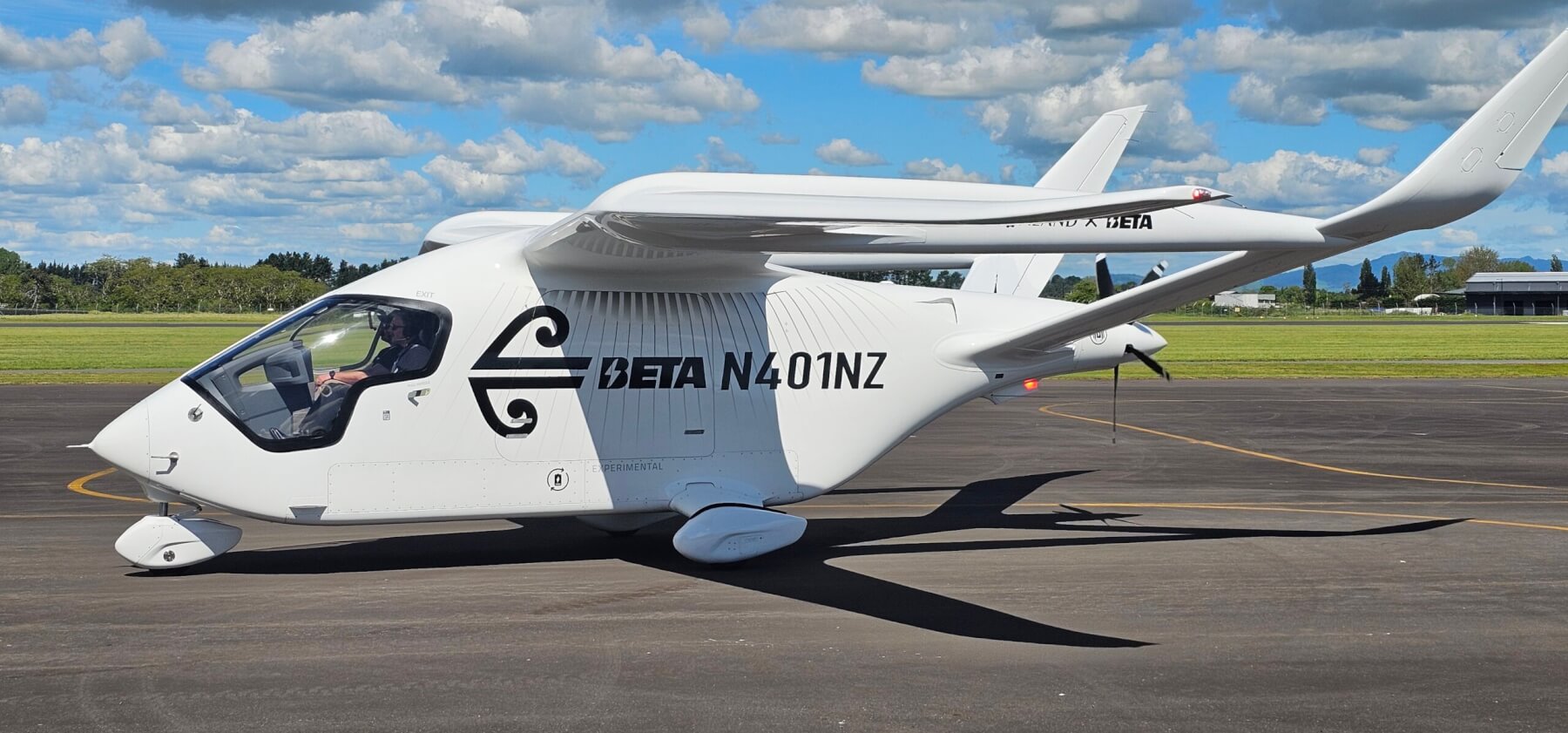
The Beta Alia CX300 battery-electric aircraft lands at Hamilton Airport.
Pioneers like Ossie James, Max Clear, and Ewan Wilson – alongside the Waikato Aero Club and companies such as Pacific Aerospace – are synonymous with Waipā’s spirit of aviation innovation.
“We can make magic when we work and collaborate together,” said Upston.
She praised Air New Zealand’s agility and forward-thinking approach.
“Sometimes we underestimate what New Zealand can do. This is incredibly significant.”
Ravinshankar said 60 per cent of the country’s regional flights were less than 350 kilometres, making New Zealand the perfect laboratory for next generation airplanes.
Morgan said the airspace around Hamilton Airport was a great place to learn and understand the systems, infrastructure and logistics that would one day support next generation aircraft.

Tourism Minister and Taupo MP Louise Upston, Air New Zealand chief executive Nikhil Ravishankar and Waipa mayor Mike Pettit. The BETA ALIA CX300, registration N401NZ – the first battery-electric aircraft to carry our name. Developed by BETA Technologies in the United States, the ALIA CX300 represents a small but important step to explore how innovation and new technology could lay the foundations of New Zealand’s aviation in the future.
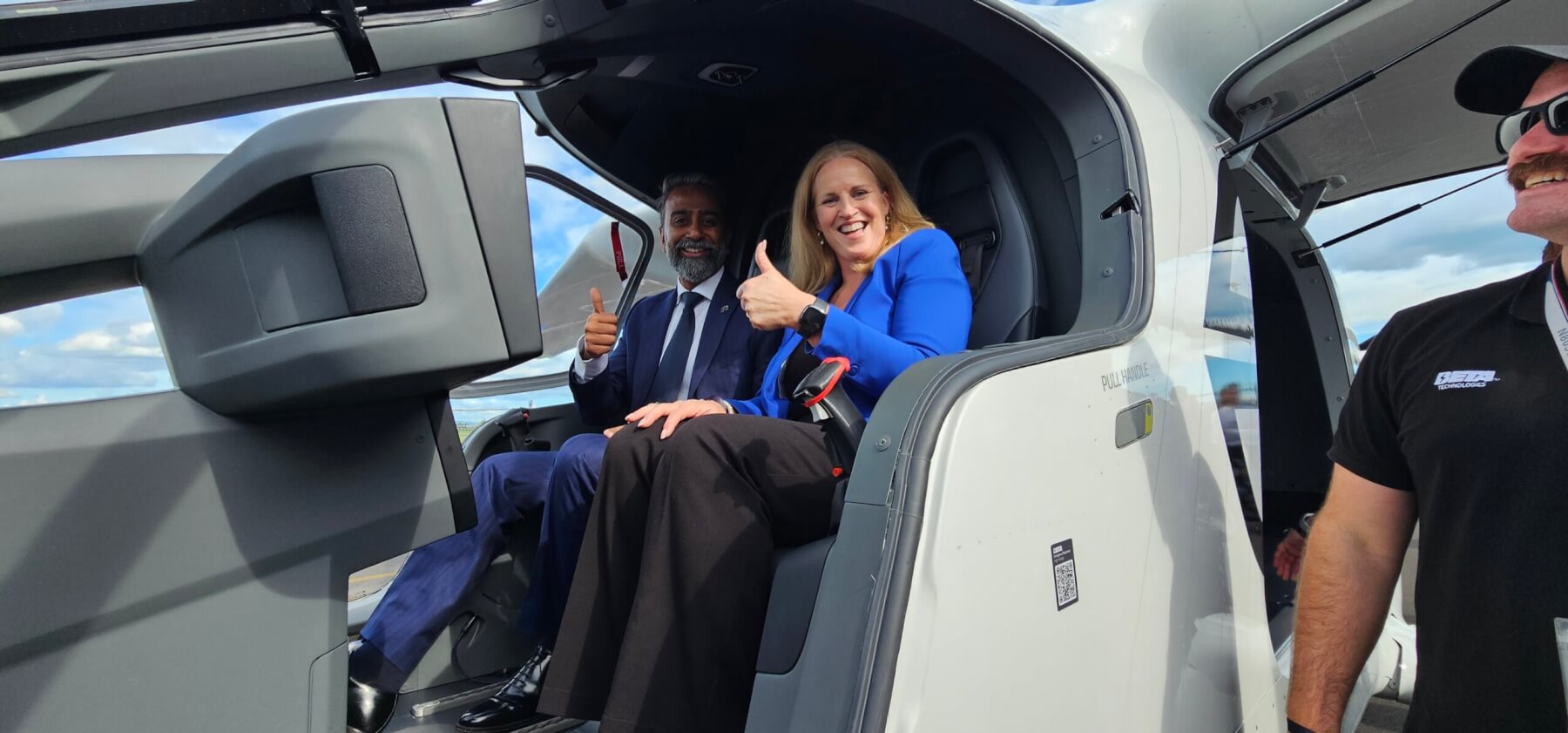
Taupo MP and Tourism Minister Louise Upston seated in Air New Zealand’s Beta Alia CX300 with Air New Zealand chief executive Nikhil Ravishankar. Photo: Mary Anne Gill
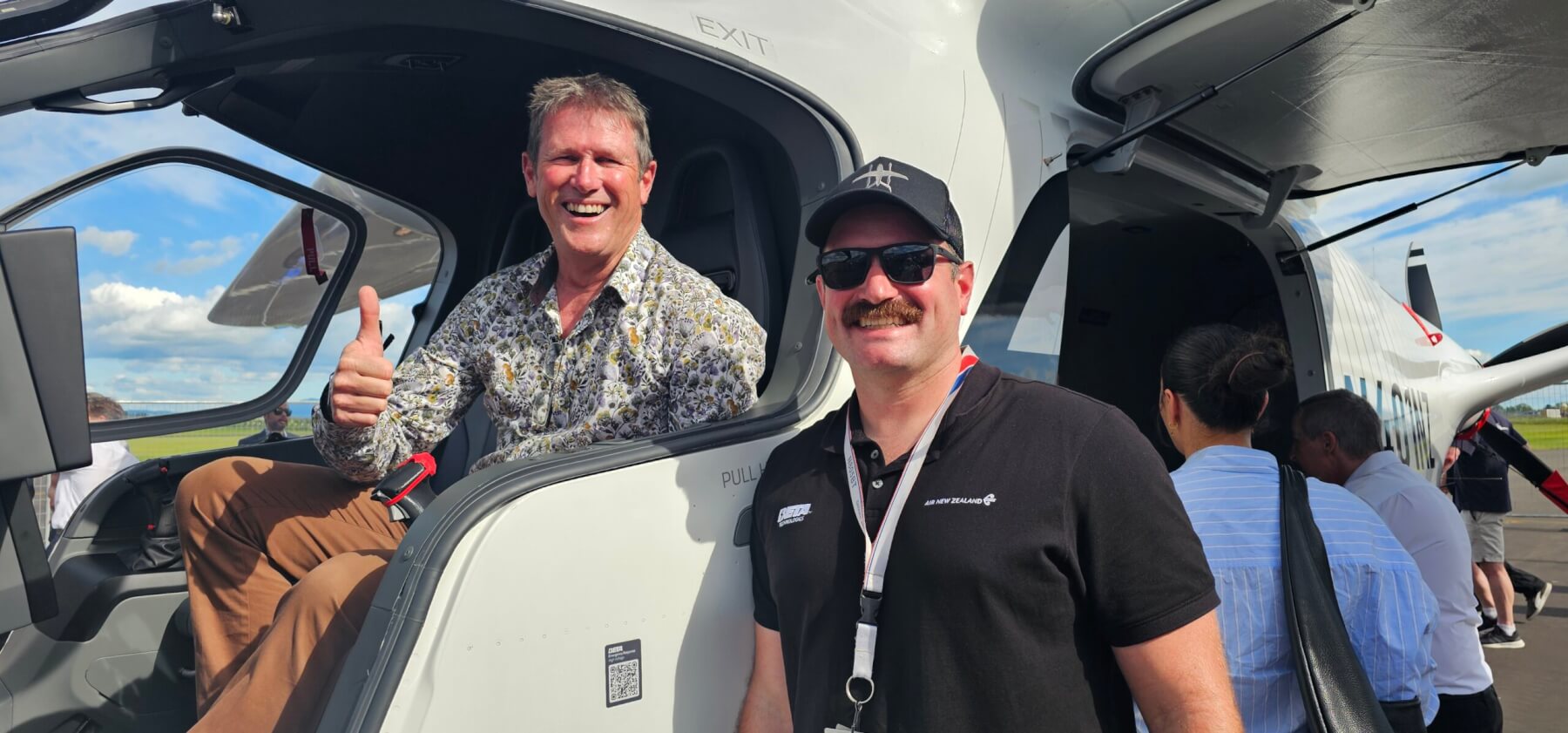
Waipa mayor Mike Pettit inside the electric plane with Beta pilot Nathan Dubie. Photo: Mary Anne Gill



